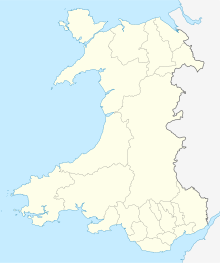Dolaucothi Gold Mines

Visitors touring the mines
|
|
| Location | |
|---|---|
| County | Carmarthenshire |
| Country | Wales |
| Coordinates | 52°02′41″N 3°56′59″W / 52.0446°N 3.9498°WCoordinates: 52°02′41″N 3°56′59″W / 52.0446°N 3.9498°W |
| Production | |
| Type | gold |
| Owner | |
| Company | National Trust |
| Website | http://www.nationaltrust.org.uk/dolaucothi-gold-mines |
The Dolaucothi Gold Mines (Welsh: Mwynfeydd Aur Dolaucothi) (grid reference SN662403), also known as the Ogofau Gold Mine, are ancient Roman surface and underground mines located in the valley of the River Cothi, near Pumsaint, Carmarthenshire, Wales. The gold mines are located within the Dolaucothi Estate which is now owned by the National Trust.
They are the only mines for Welsh gold outside those of the Dolgellau gold-belt, and are a Scheduled Ancient Monument. They are also the only known Roman gold mines in Britain, although it does not exclude the likelihood that they exploited other known sources in Devon, North Wales, Scotland and elsewhere. The site is important for showing advanced Roman technology.
Archaeology suggests that gold extraction on this site may have started sometime in the Bronze Age, possibly by washing of the gold-bearing gravels of the river Cothi, the most elementary type of gold prospecting. Sextus Julius Frontinus was sent into Roman Britain in 74 AD to succeed Quintus Petillius Cerialis as governor of that island. He subdued the Silures, Demetae and other hostile tribes of Roman Wales, establishing a new base at Caerleon for Legio II Augusta and a network of smaller Roman forts fifteen to twenty kilometres apart for his Roman auxiliary units. During his tenure, he probably established the fort at Pumsaint in west Wales, largely to exploit the gold deposits at Dolaucothi. Frontinus later restored the Aqueducts of Rome and wrote the definitive treatise on 1st century Roman aqueducts, the two volume De aquaeductu.
...
Wikipedia

